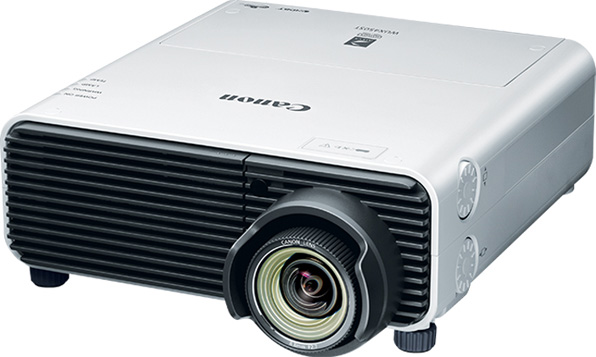Short-Throw Projection—Freeing Up Teachers with More Flexible Projection Options

- The days of teaching with the bright glare of the projector directly in the eyes of professors and teaching assistants are over. With the advent of high-quality short-throw projectors, they can relax and actually make eye contact with their students as they explain the details of everything from the defenestration of Prague to how top quarks form.
- While traditional long-throw projectors are less expensive and often offer more customization options and features, short-throw projectors excel at flexibility, including where you mount them and how teachers can use them. The key breakthrough is that instructors can not only stand in front of the projected image with no light in their eyes, but when they reach out to point to something on-screen, there are fewer shadows to interfere with the projected image. In other words, everyone gets a better view.
- Inside these devices, the optics can be quite complex, but the short- and ultra-short throw revolution boils down to throw ratios. For instance, in order to create a 60-inch diagonal image with a traditional projector, like NEC’s NP-Me301W, you’d need to set the projector up between 69.5 and 116.5 inches from the screen, depending on whether the zoom lens is set to wide or tele. That translates into a throw ratio of between 1.9:1 and 1.2:1, again, depending on the zoom lens’s setting. In practical terms, the projector would need to be mounted between 5.8- and 9.7-feet from the screen, or roughly the center of the classroom.
- By contrast, short-throw models aim their beam and image nearly straight up or down and might have a throw ratio closer to a 0.6:1 throw ratio; an ultra-short throw projector could have a 0.4:1 ratio. For them, the projector would need to be set up between 1.5- and 3-feet from the screen to create the same 5-foot image.
As a result, instead of hanging the projector off mounting hardware near the room’s center it needs to go near the classroom’s front. Sometimes, it’s mounted right against the wall, screen or whiteboard. This allows the teacher to work in front of the image without casting a shadow on it.
For the installer, this change of geometry offers a big advantage when setting up a short-throw projector. Generally, the power, audio and networking connections are already nearby, making the installation a lot easier and often cheaper.
Plus, using a short-throw projector offers something that traditional projectors can’t: mobility. This can be a boon to teachers who don’t have a formal classroom assignment or want to bring a big image into a seminar room or lab. A short throw projector can easily be mounted on a wheeled cart that has a whiteboard with the projector above. Some, like the TeamMate WorksZone Interactive Table, are built on a pivoting base that allows the projector and screen to be raised or lowered, tilted or even set up horizontally with the projector pointing straight down to table work.
Short-throw technology is still in its infancy and it has its quirks. Paramount among them is that the setup of short throw projectors can be tricky. It is essential that the projector and screen are perfectly level before you do anything else. Plus, you often have to do without things that are taken for granted with traditional projectors, like an optical zoom lens and a sharp focus.
But, by far the biggest difference between conventional and short-throw projection technologies is price. A competent long-throw classroom projector, such as Optoma’s HD142X, might cost around $550 with full HD imaging and brightness levels in the 3,000-lumen range. By contrast, a short throw projector, like Epson’s PowerLite 535W, costs $1,000 and creates less-detailed wide-XGA images.
A daily selection of features, industry news, and analysis for tech managers. Sign up below.
